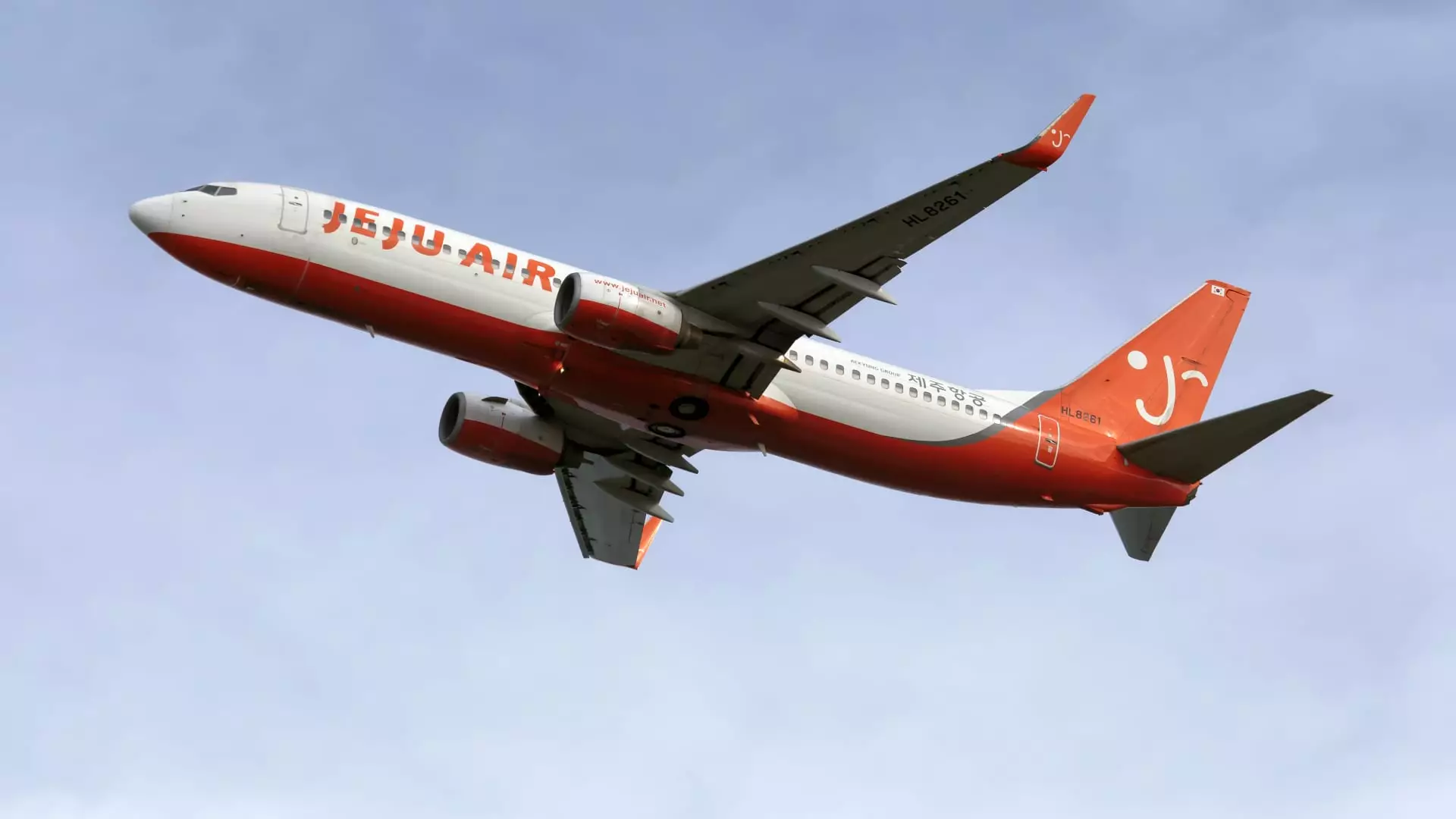The recent belly landing of Jeju Air Flight 7C2216 at Muan International Airport has sent shockwaves through the aviation community and the public at large. This catastrophic event, which resulted in the deaths of 179 of the 181 passengers and crew onboard, marks one of the most devastating air disasters in South Korea’s history. As investigators sift through the wreckage and circumstances of the incident, a multitude of questions arise, demanding urgent answers not just for the sake of accountability but for improving air travel safety in the future.
In response to this tragedy, South Korea’s acting President Choi Sang-mok initiated an emergency inspection targeting the country’s fleet of Boeing 737-800 models—the same aircraft type involved in the accident. This response reflects a broader anguish felt by the nation, as collective memories of past tragedies resurface. The Boeing 737-800 is a staple in the commercial aviation landscape, with nearly 4,400 of these aircraft currently in service worldwide. Despite its generally good safety record, the failure of the aircraft to deploy its landing gear has prompted questions regarding its operational integrity, maintenance standards, and the reliability of safety protocols.
The aircraft involved in the crash was approximately 15 years old and had originally been part of Ryanair’s fleet before being transferred to Jeju Air in 2017. While age can generally be a factor in aircraft-related incidents, experts maintain that the 737-800’s long history of reliable service makes a design flaw unlikely. Richard Aboulafia, an authority in aerospace consulting, has stressed that finding a design flaw after so many years of safe operation would be “borderline inconceivable.” Therefore, a deeper examination of operational protocols and maintenance logs will likely be more fruitful avenues for the investigation.
As the investigation unfolds, the challenges faced by aviation authorities cannot be understated. Engaging multiple agencies—including the National Transportation Safety Board (NTSB) of the U.S. and Boeing itself—complicates the dynamics of accountability and could lengthen the investigative timeline to over a year. Such a comprehensive inquiry typically encompasses technical assessments, witness interviews, and scrutinizing last-minute cockpit communications. Each facet is instrumental in piecing together the events leading up to the disaster. It’s not just the mechanics of the aircraft that require examination; human factors—crew training, adherence to emergency protocols, and situational awareness—must also be woven into this complex narrative.
The reasons behind the aircraft’s failure to deploy its landing gear remain speculative at this stage. One theory suggests a potential bird strike might have severely incapacitated the engines, leaving the crew little room to execute standard emergency procedures. Jeff Guzzetti, a former U.S. air safety investigator, has indicated that if such an incident occurred during critical phases of flight, it could result in catastrophic outcomes almost instantly. If the aircraft had upon landing encountered a more forgiving surface instead of a hard wall, the fatalities may have been drastically reduced, further complicating the post-incident evaluations.
As investigations continue and answers are pursued, one thing stands clear: aviation safety protocols must evolve continuously to minimize the potential for future tragedies. This incident serves as a grim reminder that despite robust safety records, the aviation industry cannot afford complacency. Lessons must be learned, strategies refined, and communication between regulators, manufacturers, and airlines improved. The aim is to ensure that every flight, every landing, and every takeoff is as safe as possible, preserving the lives of countless passengers.
The Jeju Air Flight 7C2216 tragedy paints a complex picture of modern aviation’s challenges. As the world watches, the findings of this investigation will not only hold the potential to impact Jeju Air but may also resonate within the broader context of international aviation safety.


Leave a Reply